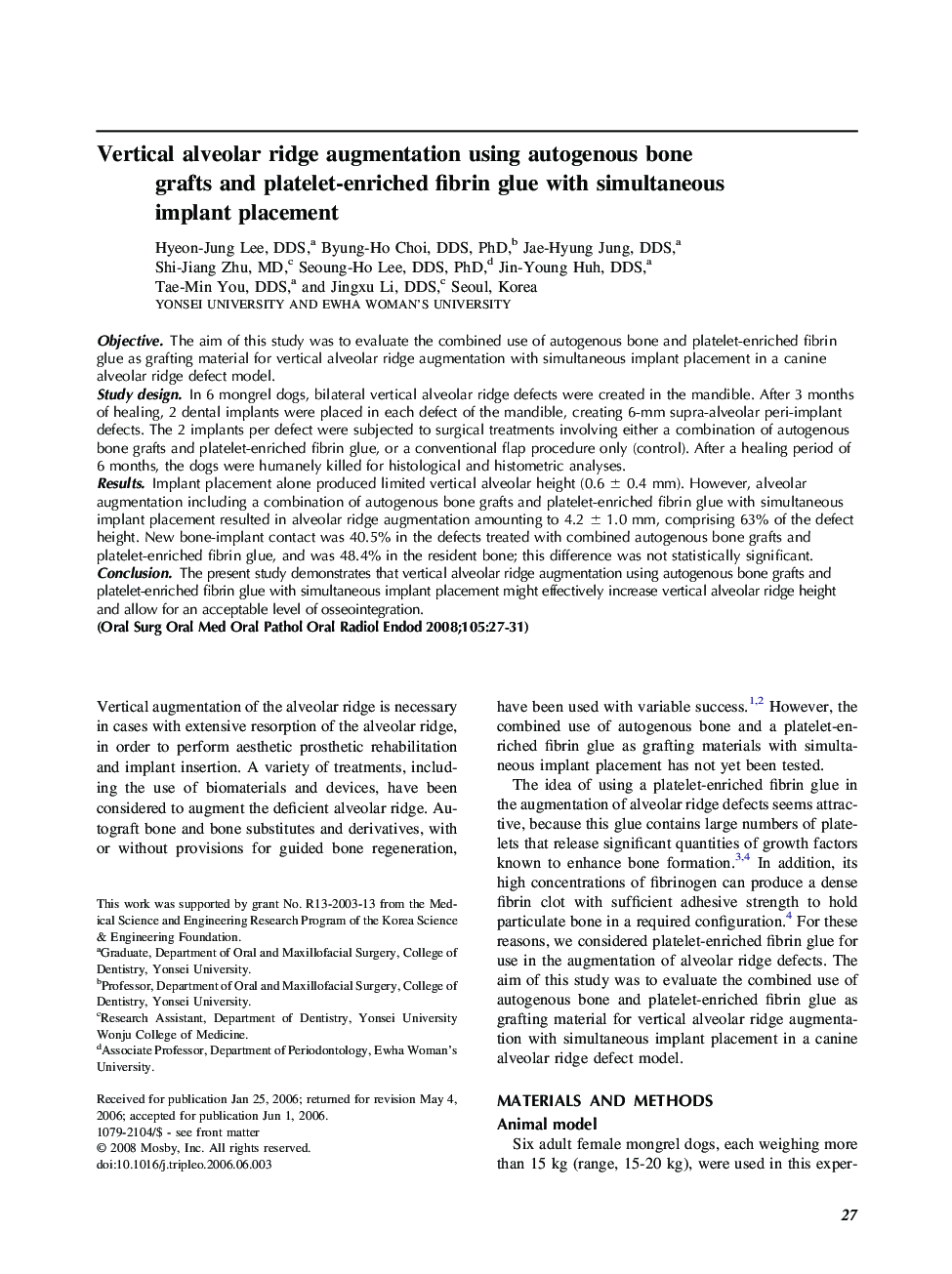| Article ID | Journal | Published Year | Pages | File Type |
|---|---|---|---|---|
| 3168974 | Oral Surgery, Oral Medicine, Oral Pathology, Oral Radiology, and Endodontology | 2008 | 5 Pages |
ObjectiveThe aim of this study was to evaluate the combined use of autogenous bone and platelet-enriched fibrin glue as grafting material for vertical alveolar ridge augmentation with simultaneous implant placement in a canine alveolar ridge defect model.Study designIn 6 mongrel dogs, bilateral vertical alveolar ridge defects were created in the mandible. After 3 months of healing, 2 dental implants were placed in each defect of the mandible, creating 6-mm supra-alveolar peri-implant defects. The 2 implants per defect were subjected to surgical treatments involving either a combination of autogenous bone grafts and platelet-enriched fibrin glue, or a conventional flap procedure only (control). After a healing period of 6 months, the dogs were humanely killed for histological and histometric analyses.ResultsImplant placement alone produced limited vertical alveolar height (0.6 ± 0.4 mm). However, alveolar augmentation including a combination of autogenous bone grafts and platelet-enriched fibrin glue with simultaneous implant placement resulted in alveolar ridge augmentation amounting to 4.2 ± 1.0 mm, comprising 63% of the defect height. New bone-implant contact was 40.5% in the defects treated with combined autogenous bone grafts and platelet-enriched fibrin glue, and was 48.4% in the resident bone; this difference was not statistically significant.ConclusionThe present study demonstrates that vertical alveolar ridge augmentation using autogenous bone grafts and platelet-enriched fibrin glue with simultaneous implant placement might effectively increase vertical alveolar ridge height and allow for an acceptable level of osseointegration.
